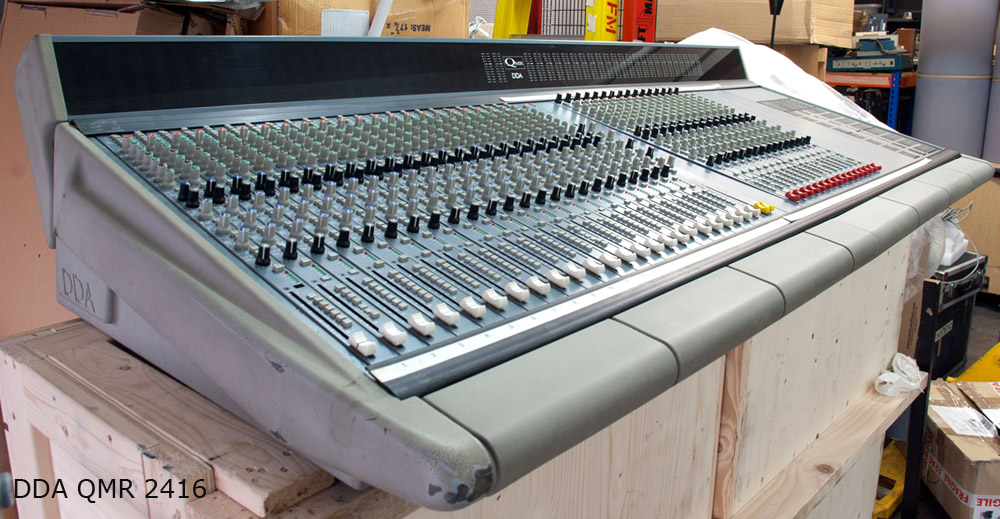The Eccentric back-of-a-large-envelope guide to analogue mixing consoles
Having sold, serviced, installed and commissioned upwards of five hundred new and used analogue mixing consoles over the last two creaky decades – probably more than any other reseller in Europe if not the world – I’ve learnt the hard way that many pitfalls lie in wait for the unwary, and as someone who takes pride in ensuring all the used equipment we sell is serviced and supported by the best technical backup available, I’m extremely selective about those desks Funky Junk is involved with. I like my clients to sleep well at night because that means I sleep well too. Sadly, though, we’re called upon to help the sleepless all too often when they leap into the dark based upon myth, half-baked internet garbage or blind faith.
Accordingly, I’ve jotted down a VERY BASIC guide about what to avoid, what to look for and what to bear in mind when considering a new or used analogue desk.
USED CONSOLES
AMEK
MCI
HARRISON
CADAC
CALREC
SOUNDCRAFT
Yes, pots and capacitors can be an issue if the desks have been heavily used, but generally they’re relatively easy to service, requiring elbow grease rather than quids, and as long as you’re not trying to impress your neighbour with the glitz, you can cut some great sounding tracks with these (and impress snotty-pants neighbour with the sound).
It’s worth mentioning that small 1980’s Soundcraft desks, including the 400, 500, 600 and 16- or 24-bus 6000, are also exceptional value for money. And you can always put a Neve sticker over the Soundcraft logo and trick Mr. Gearslutz into believing you’ve robbed a bank; I doubt he’d know the sonic difference.
DIGITALLY CONTROLLED ANALOGUE
The other digitally controlled analogue desk worthy of considering is the OTARI STATUS, which offers a mad amount of facilities and powerful automation in a compact package.
DESKS WORTH CONSIDERING
Useable consoles fall into two categories:
Modern Large Format
SSL consoles are well built, use good quality components and are relatively easily serviceable by a qualified tech. They are powerful, have a pleasing ‘gloss’ to the sound beloved of R&B, pop, rap and hip-hop producers, and in these Pro Tools days, are not as reliant on the (often cranky) automation as they once were.
The downside is that they need a separate machine room (for power supplies and computer, both of which are noisy), need to be turned on 24/7, generate a lot of heat meaning that both the control room and machine room must be air conditioned and require regular maintenance. Potential buyers should be aware that electricity costs could run into five figures annually.
Weaknesses are routing switches (an expense pain to replace) and bargraph meters (if fitted), plus, of course, non-availability of power supplies and computer processing boards.
Nevertheless, later SSLs are still prized by leading producers and studios and probably represent the safest option for those prepared to pay a sensible price for a well cared for and maintained example.
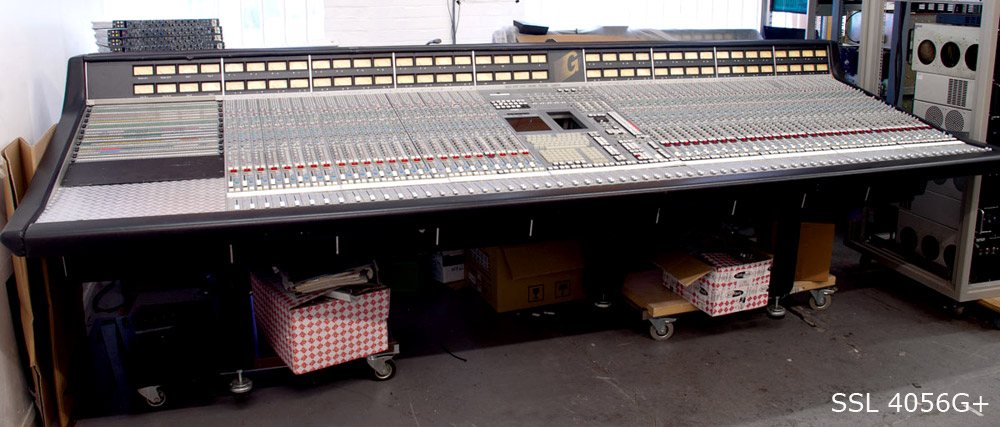
NEVE
The downside is that these are complicated thoroughbred mechanical beasts that require constant maintenance to perform to the utmost. Most worryingly, the V series suffer from serious capacitor and switch problems, and potential buyers should ascertain that the desk has been relatively recently recapped and reswitched because if it hasn’t, it will need attention soon, and this could run into many thousands of pounds.
Like SSL 4000’s, large format Neves need a machine room, require expensive installation and ongoing maintenance, and constant air con in the control room, making them expensive to run (electricity including air conditioning and service costs could run to £10,000 per annum for a 72 input).
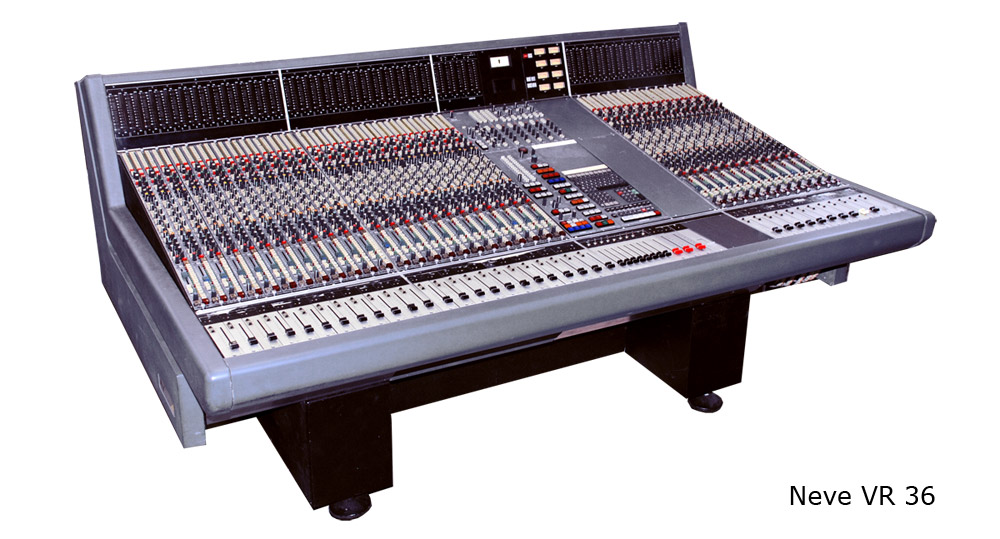
STUDER
Good quality components were used and most are still available (faders being the biggest issue). They run cool, meaning capacitors tend not to be a problem and air conditioning is not essential, power supplies are convection cooled so can be sited in the control room, and the EQ and facilities are flexible, comprehensive and musical. These desks will start to gain a reputation of affordable classics as the better known vintage desk rocket in value.
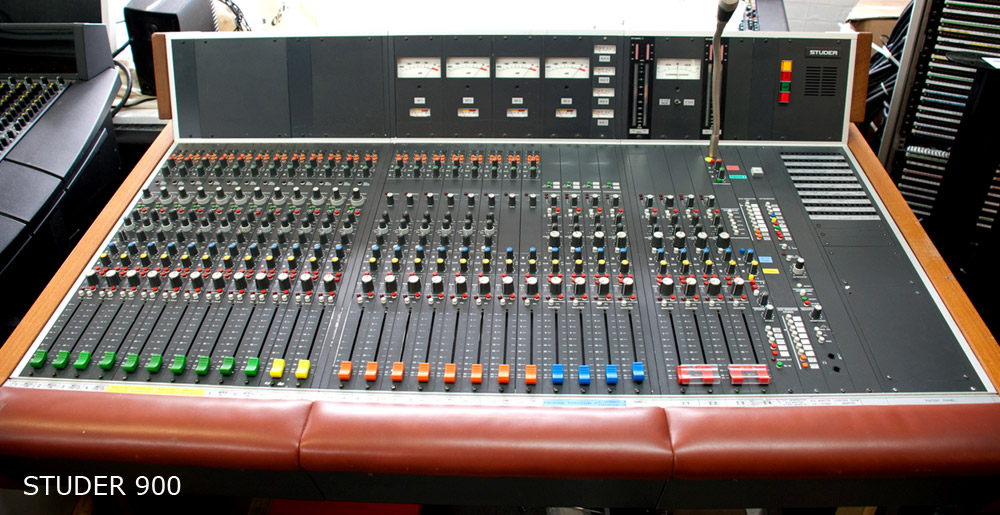
TRIDENT
The best known console is the Series 80 (available in four flavours: Series 80, early 80B, later 80B and 80C) which have musical swept EQ, four mono and a stereo aux send (like the SSL), 24 monitors (with filters/EQ and aux on later versions) and VU metering. Early desks were 32 inputs (offering 56 on mix) and the later 80B/80C were 30 inputs, offering 54 on mix (plus aux returns). Maybe a bit of a one trick pony, they’re beloved of the grunge fraternity in the States but also plumbed into some of the most reputable rock studios around the world (such as Sawmills in the UK where the classic Oasis albums were recorded amongst others). The Series 70 is a 16 buss version and is, to my eyes and ears, one of the cutest professional consoles ever made.
Trident also made other good sounding desks – the A range and B range were fully discrete and preceded the Series 80 though can require a lot of work; but the more budget TS24, Series 75 and Series 65 offer fully professional consoles in an affordable and extremely useable format (VU meters, plenty of aux’s, musical swept EQ and low maintenance). Definitely worth considering.
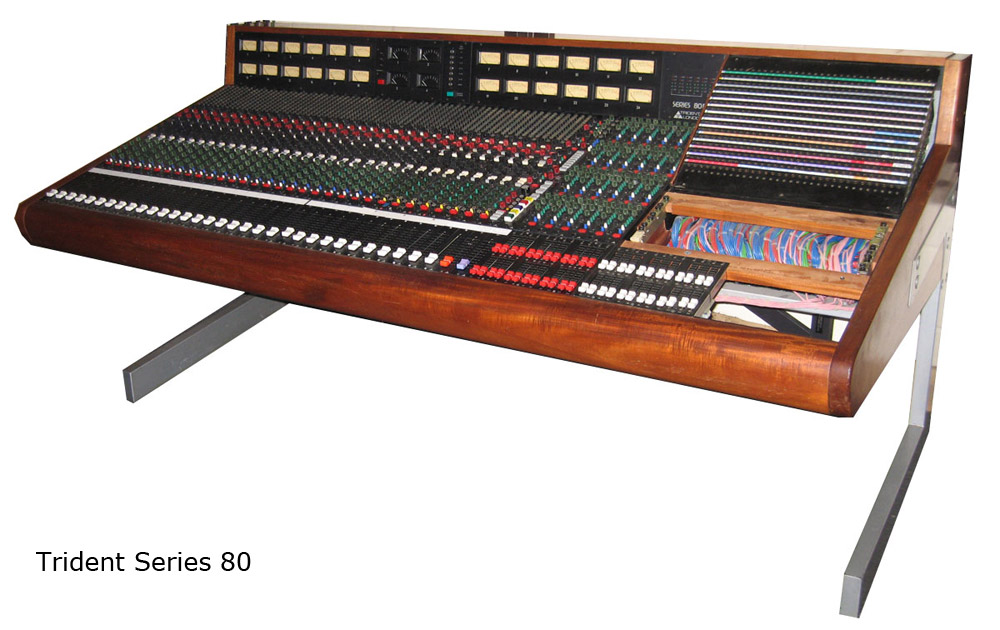
DDA
For example, ten years ago I advised a new college to invest in a used DMR12 (DDA’s clever twist on a split console, with twelve mic/line inputs and 24 line only monitor inputs with full EQ and auxiliaries), and although the college has relocated twice and is now one of the most successful institutes in London with hundreds of students, that desk is still going strong with a minimum of repairs or service.
Other desks in the series include the QMR (as used by Nicky Ryan to recording the multi-million selling Enya albums). Now available for peanuts, these superbly designed desks remain as relevant to the modern recording suite as ever, despite being trashed in bone-headed recording chatrooms and forums by ignoramuses who’ve never been within a mile of using one and who rave about shoddy modern travesties that rely on big knobs and hype to generate sales. Let them whinge – if you want quality at a bargain price and aren’t snobbish about the name on the tin, there are serious bargains to be had.
Oh, by the way, Mr Dearden is also the talent behind Audient (see below) although to my mind, his DDA desks are superior in just about every respect (and when made cost several times as much).
